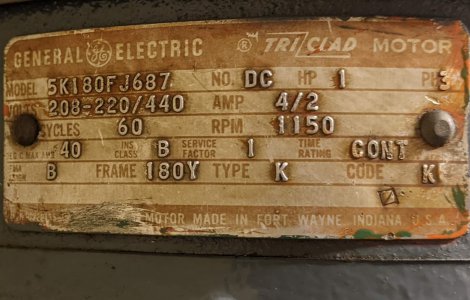Here's the dataplate on my new to me millrite. What's throwing me off is the "DC". Not sure if that's an internal code from GE or if that means that's a DC 3-ph motor. The place I bought the mill from had it running on 220v 3ph but the salesman didn't know if it was dc or ac power.
 Other question is what are people's experience with KB vfd's? I'm not rich but it is a business expense so reliability and ease of use is more important than cost.
Other question is what are people's experience with KB vfd's? I'm not rich but it is a business expense so reliability and ease of use is more important than cost.
 Other question is what are people's experience with KB vfd's? I'm not rich but it is a business expense so reliability and ease of use is more important than cost.
Other question is what are people's experience with KB vfd's? I'm not rich but it is a business expense so reliability and ease of use is more important than cost.

